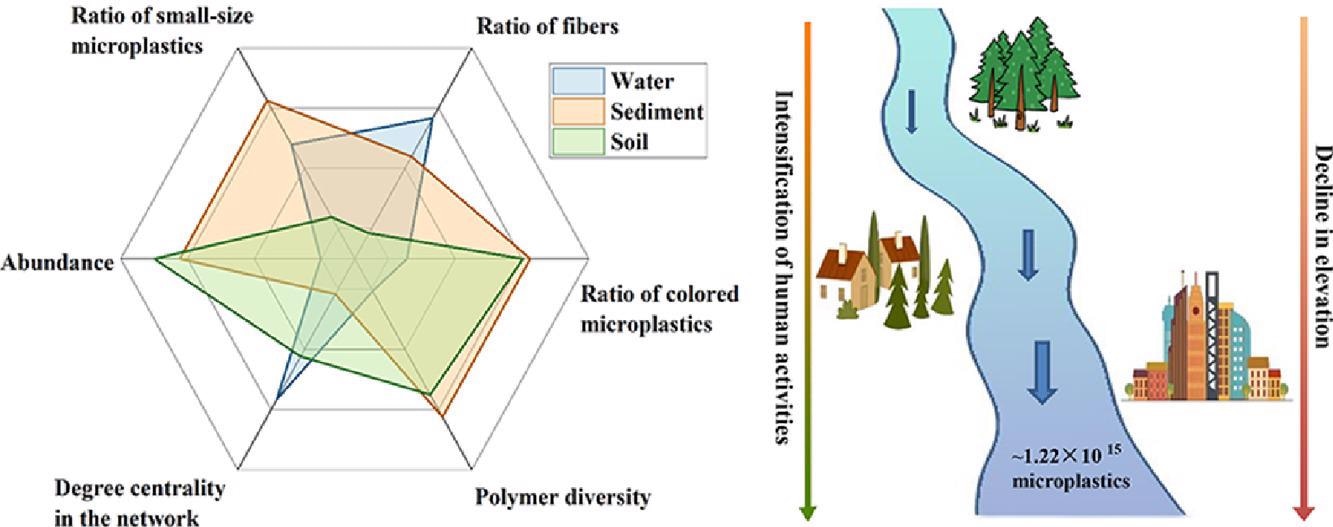Microplastics are spreading throughout the world and have emerged as a new contaminant in the water environment. Rivers may play a significant role in the transfer of microplastics from land to sea. However, field studies on the environmental fate of microplastics at the watershed scale are still missing, which is critical for determining the exact roles of river systems in transferring microplastics into the ocean.
 Graphical abstract of the research. Image Credit: Wenke Yuan.
Graphical abstract of the research. Image Credit: Wenke Yuan.
Wenke Yuan, an assistant researcher from the Chinese Academy of Sciences’ Wuhan Botanical Garden, utilized basin-wide interrogation and microplastic community analysis techniques to investigate the source, migration and fate of microplastics in the Yangtze River Basin to define policy suggestions for improved remediation of microplastic pollution involving riverine systems. This investigation was done under the supervision of Professor Yuyi Yang.
Microplastics were widespread and diverse in the Yangtze River Basin, according to the scientists, and were transported over vast distances in the river, stretching to the ocean. The Yangtze River Basin’s principal sources of microplastics may be domestic wastewater, fisheries activities and surface runoff. Microplastic prevalence has increased from upstream to downstream due to a combination of geographical and anthropogenic sources.
Moreover, microplastic density and size may be important determinants of microplastic migration in distinct compartments. Due to their small size and strong vertical movement, sedimentary microplastics pose a considerable ecological concern.
In addition, community analyses on microplastic polymers were presented and emphasized in this research, indicating that future microplastic research has a lot of promise. Microplastic communities in distinct environmental compartments were notably diverse, and geographical distance was closely connected with them.
The Yangtze River Basin’s major cities in the middle and lower reaches were regarded as critical nodes of microplastic pollution and hence must receive more attention in the future in terms of microplastic prevention and management.
In 2019, 1.22 × 1015 microplastic objects (0.05~5 mm) were anticipated to have entered the sea through the Yangtze River’s water (97.54%) and sediment (2.46%). Microplastics mitigation in the Yangtze River Basin should, therefore, prioritize water management and treatment of wastewater.
The study was supported by the National Natural Science Foundation of China and the Special Research Assistant Project of CAS.
Journal Reference:
Yuan, W., et al. (2022) Environmental fate of microplastics in the world’s third-largest river: Basin-wide investigation and microplastic community analysis. Water Research. doi.org/10.1016/j.watres.2021.118002.